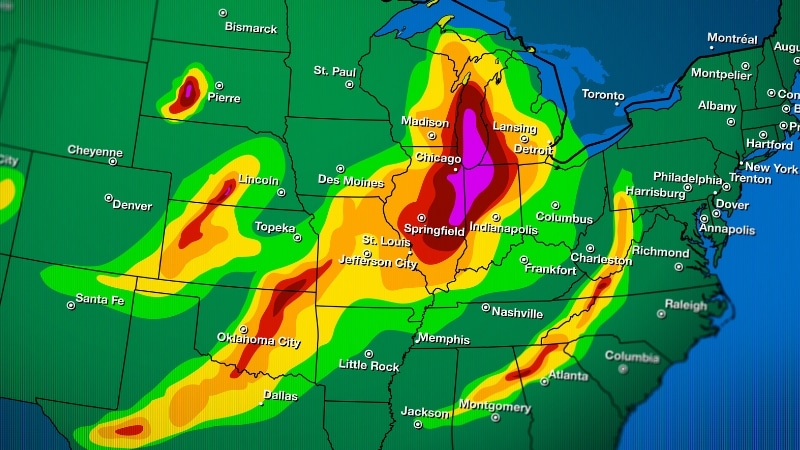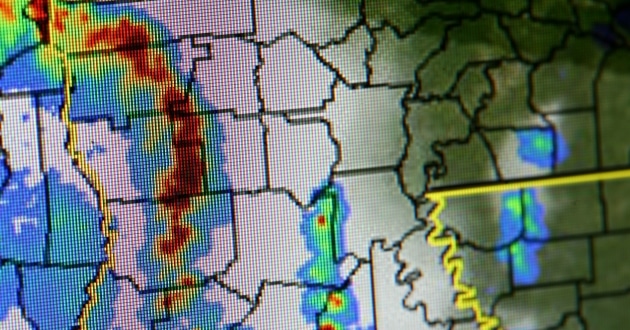Weather news severe alerts are critical for keeping communities safe and informed during extreme weather conditions. Staying updated with severe weather alerts ensures that individuals and families can take necessary precautions to protect themselves and their property.
One of the most important aspects of weather news severe alerts is the ability to receive real-time updates. Advances in meteorological technology allow for accurate and timely warnings about impending severe weather events.
In addition to immediate warnings, weather news severe alerts also provide valuable information about the aftermath of severe weather events. Updates on road conditions, power outages, and ongoing risks are crucial for ensuring public safety and facilitating recovery efforts.
Understanding Severe Weather Alerts

Severe weather alerts are notifications issued by meteorological agencies to inform the public about potentially dangerous weather conditions. These alerts help communities take necessary precautions to protect lives and property.
Types of Severe Weather Alerts
There are several types of severe weather alerts, each indicating different levels of severity and types of weather events. Here are the most common ones:
- Severe Thunderstorm Warning: Issued when thunderstorms with high winds, hail, and heavy rain are imminent.
- Tornado Warning: Indicates that a tornado has been sighted or detected by radar. Immediate action should be taken.
- Flash Flood Warning: Alerts of sudden, intense flooding due to heavy rainfall or rapid snowmelt.
- Hurricane Warning: Issued when a hurricane is expected to make landfall within 36 hours, bringing high winds, heavy rain, and storm surges.
- Winter Storm Warning: Indicates significant winter weather conditions, such as heavy snowfall, ice, or sleet.
How Alerts are Issued (Weather news severe alerts)
Meteorological agencies, such as the National Weather Service (NWS) in the United States, use advanced technology to monitor weather conditions and issue alerts. These alerts are disseminated through various channels, including:
- Weather Radio: NOAA Weather Radio provides continuous broadcasts of weather information and severe alerts.
- Television and Radio: Local news stations interrupt programming to broadcast severe weather alerts.
- Mobile Apps: Weather apps send push notifications for severe weather alerts based on your location.
- Social Media: Agencies and news outlets use platforms like Twitter and Facebook to share real-time updates.
| Alert Type | Description | Recommended Action |
|---|---|---|
| Severe Thunderstorm | High winds, hail, heavy rain | Seek shelter indoors |
| Tornado | Tornado sighted or detected by radar | Take cover in a safe room or basement |
| Flash Flood | Sudden, intense flooding | Move to higher ground |
| Hurricane | Hurricane expected within 36 hours | Evacuate if advised, secure property |
| Winter Storm | Heavy snowfall, ice, or sleet expected | Stay indoors, avoid travel |
The Importance of Staying Informed
Being aware of weather news severe alerts can make a significant difference in your ability to respond to emergencies. Timely information allows you to take preventive measures, such as securing property, stocking up on essentials, and evacuating if necessary.
Preventing Damage (Weather news severe alerts)
Knowledge of impending severe weather can help you minimize damage to your property. For example, you can board up windows during a hurricane warning or secure outdoor furniture to prevent it from becoming airborne during a severe thunderstorm.
Protecting Lives
The primary purpose of severe weather alerts is to protect lives. Understanding the different types of alerts and the recommended actions for each can help you and your family stay safe. For instance, knowing to seek shelter immediately when a tornado warning is issued can be life-saving.
Preparing for Severe Weather
Preparation is key to mitigating the impacts of severe weather. Here are some practical steps to help you get ready:
Create an Emergency Kit
An emergency kit should contain essential items to help you survive during and after severe weather. Include the following:
- Water: At least one gallon per person per day for three days.
- Food: Non-perishable food items for three days.
- First Aid Kit: Bandages, antiseptics, medications, and other medical supplies.
- Flashlights and Batteries: To provide light if the power goes out.
- Radio: A battery-powered or hand-crank radio to receive updates.
- Multi-Tool: A versatile tool for various emergency needs.
- Personal Documents: Copies of important documents like IDs, insurance policies, and medical records.
Develop a Family Emergency Plan (Weather news severe alerts)
Having a plan in place ensures that everyone in your household knows what to do during a severe weather event. Your plan should include:
- Communication Strategy: How to stay in touch if you get separated.
- Evacuation Routes: Identify safe routes and destinations if evacuation becomes necessary.
- Safe Locations: Designate safe areas in your home, such as a basement or interior room without windows.
- Pet Plan: Make arrangements for your pets, including food, water, and a carrier.
Stay Informed
Use multiple sources to stay updated on weather news severe alerts. Subscribe to alert services, download weather apps, and follow reliable weather news outlets on social media. Regularly check the forecast, especially during severe weather seasons.
Responding to Severe Weather
Knowing how to respond to severe weather alerts is crucial. Each type of alert requires specific actions to ensure safety.
1. During a Severe Thunderstorm
- Indoors: Stay away from windows and avoid using electrical appliances.
- Outdoors: Seek shelter immediately, avoid open fields, and stay away from tall objects like trees.
2. Tornado a During (Weather news severe alerts)
- Indoors: Go to a basement or an interior room on the lowest floor. Avoid windows and cover yourself with a mattress or heavy blankets.
- Outdoors: Find a low-lying area, lie flat, and cover your head with your hands.
3. During a Flash Flood
- Indoors: Move to higher floors if water starts to enter your home.
- Outdoors: Avoid walking or driving through floodwaters. Just six inches of moving water can knock you down, and one foot of water can sweep a vehicle away.
4. Hurricane
- Before the Storm: Evacuate if advised, secure windows and doors, and move valuables to higher levels.
- During the Storm: Stay indoors, away from windows, and listen to updates from authorities.
5. Winter Storm
- Indoors: Keep warm with layers of clothing and blankets. Use alternative heating sources safely.
- Outdoors: Avoid travel if possible. If you must go out, dress warmly, and be aware of the signs of frostbite and hypothermia.
Discover the Latest in Science News Recent Discoveries
Staying updated with the latest in science is crucial for anyone interested in how our understanding of the world is evolving. For comprehensive coverage of the most significant science news recent discoveries, visit science news recent discoveries. This resource provides detailed insights into groundbreaking research and technological advancements.
Conclusion
Staying informed about weather news severe alerts is essential for protecting yourself, your family, and your property. By understanding the different types of alerts, knowing how to prepare, and responding appropriately, you can minimize the impact of severe weather. Make it a habit to check weather forecasts regularly, use multiple sources for updates, and always be prepared for unexpected weather events. Remember, taking proactive steps today can make a significant difference when severe weather strikes.



